A Year in the Life of a Burning Forest
Sequoia and Kings Canyon National Parks are on the frontlines of climate change
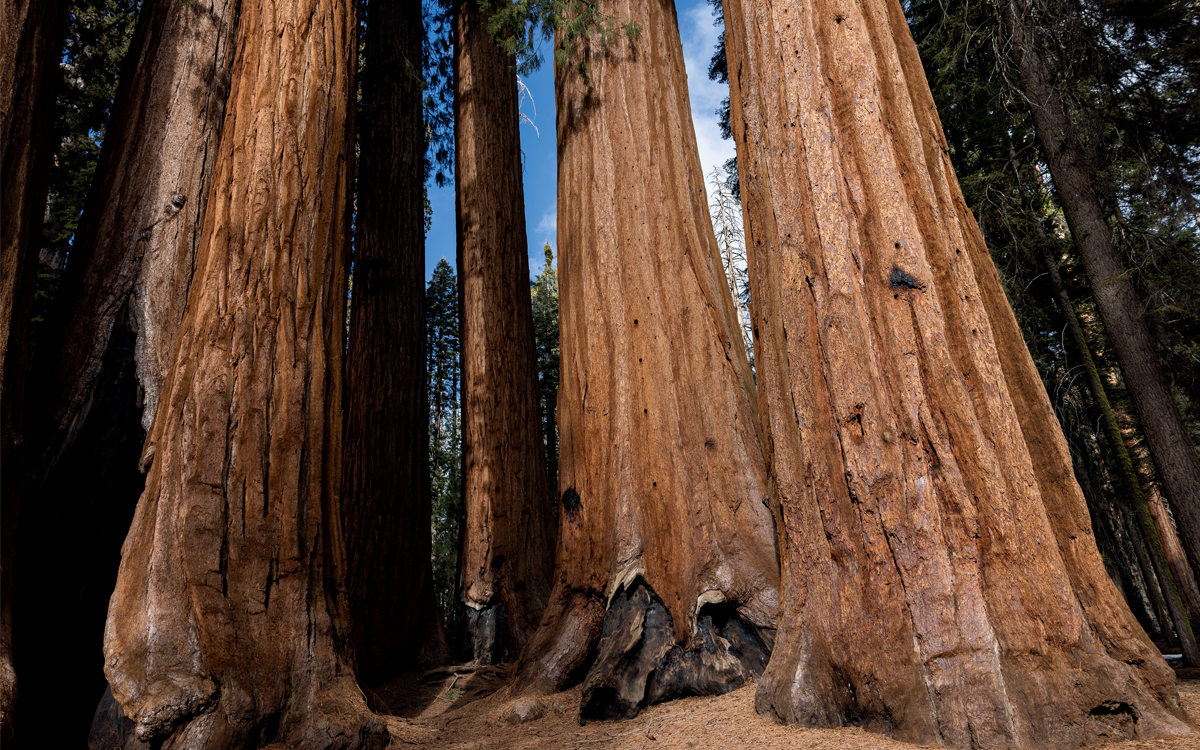
A fire-managed grove This cluster of sequoias is part of the Parker Group in Giant Forest, the largest unlogged sequoia grove in the parks and one of the few groves where controlled burns have been held regularly since the 1980s. The resulting landscape—cathedral-like trees with almost no undergrowth—is what all sequoia groves would have looked like before Native Americans, who had conducted prescribed burns, were forcibly removed from their lands in the late 1800s. The KNP Complex Fire scorched the edges of Giant Forest but dropped to the ground as soon as it reached areas that had already been cleared by fire.
working as the chief of resources management and science at Sequoia and Kings Canyon National Parks in 2015. It was a tense time for anyone working with trees. California was three years deep into one of the worst droughts in the state’s history, and some 12 million trees had died in the southern Sierra Nevada—a figure that would eventually rise to more than 60 million.
The one type of tree Brigham was told she didn’t have to worry about was Sequoiadendron giganteum. “What I was told when I got here is that nothing kills sequoias,” Brigham says. “Eventually they just fall over.”
A mature sequoia’s mortality rate is a fraction of other species’. Its thick bark is nearly impervious to fire and insects.
There are perfectly healthy sequoias in the parks that were alive when Mount Vesuvius destroyed Pompeii.
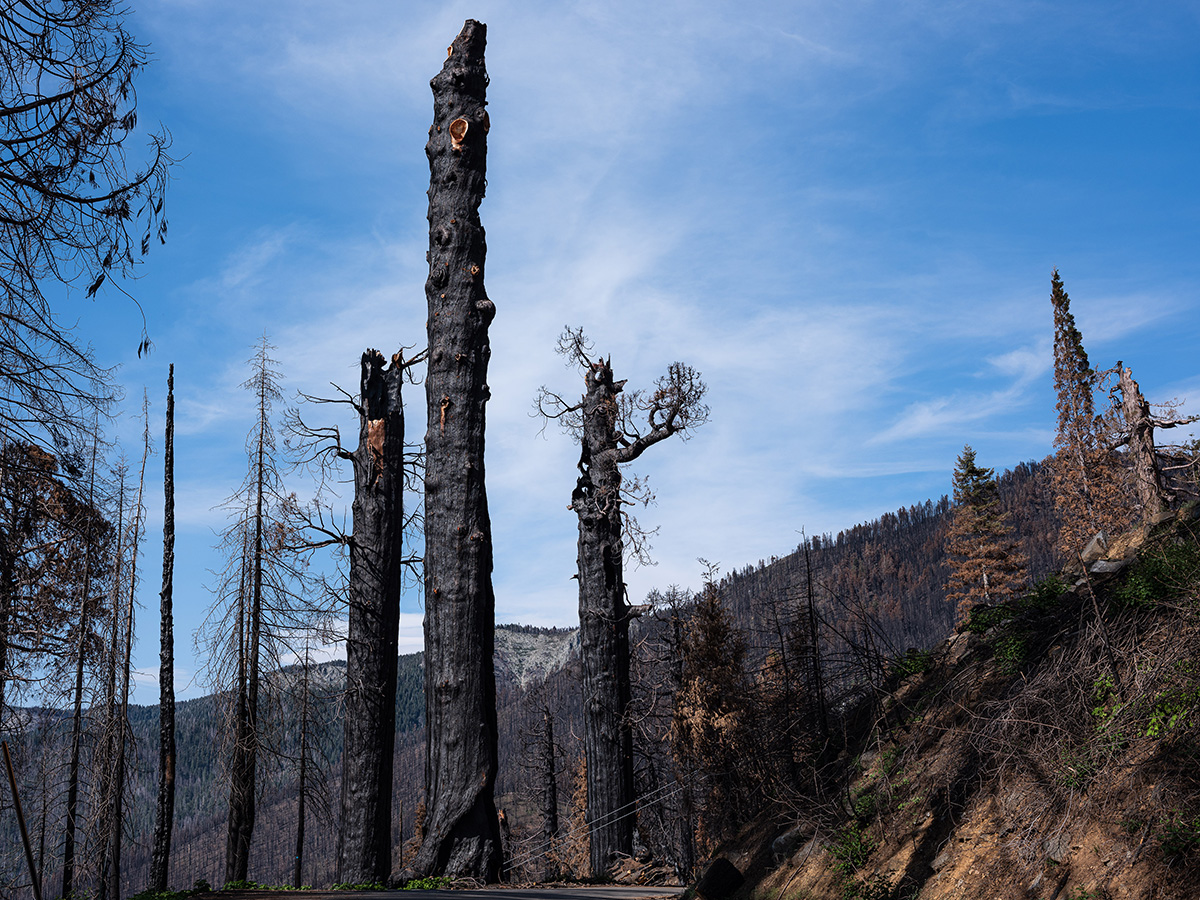
Overcome by hotter fires The scorched remnants of three sequoias in the Alder Creek grove killed during the Castle Fire. Hotter fires fueled by overgrown forests and climate disruption mean that some sequoia groves may convert to scrubland and never return as forest without human help. Another possibility is that Sequoiadendron giganteum will survive, but most trees won’t live as long or grow as large, becoming a little less spectacular and more like other tree species.
One of Brigham’s priorities was restoring fire to areas that had become dangerously overgrown. Tony Caprio, a fire ecologist for Sequoia and Kings Canyon, estimates that about 30,000 acres need controlled burns each year to keep wildfires relatively mild; if a fire doesn’t get high enough to burn through the crown of a sequoia, that tree has a good chance of surviving.
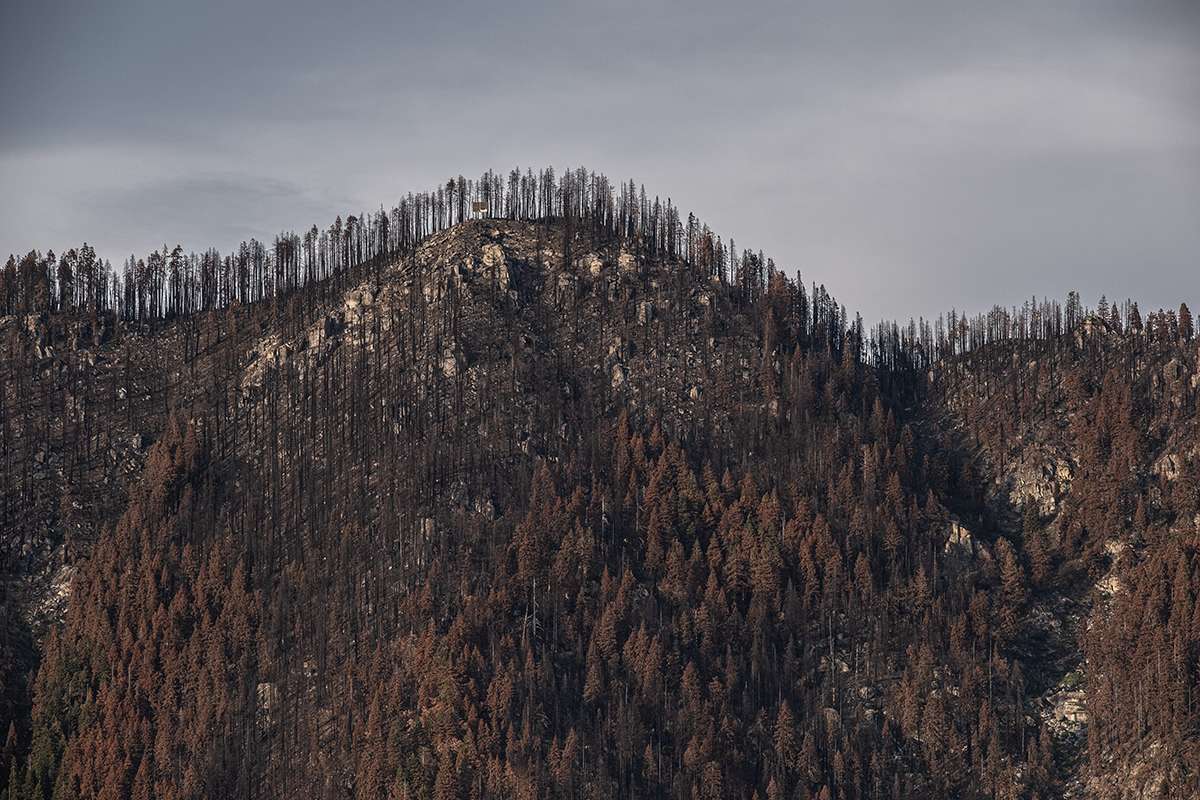
A mountain ridge in Sequoia National Forest burned by the Castle fire in 2020. The fire lasted from August to December, destroying 7,000 to 10,600 giant sequoias.
But each year, Caprio has been able to burn only about 1,000 acres. (In 2021, the drought was so severe that Caprio could burn only 28 acres before wildfire season set in.)
In 2017, a new problem emerged. Researchers noticed that some sequoia branches on the forest floor were infested with cedar bark beetles—native insects that had never been known to attack the trees before.
Two scientists with expertise in tree climbing, Wendy Baxter and Anthony Ambrose, scaled some trees to see whether the beetles were attacking live sequoias as well.
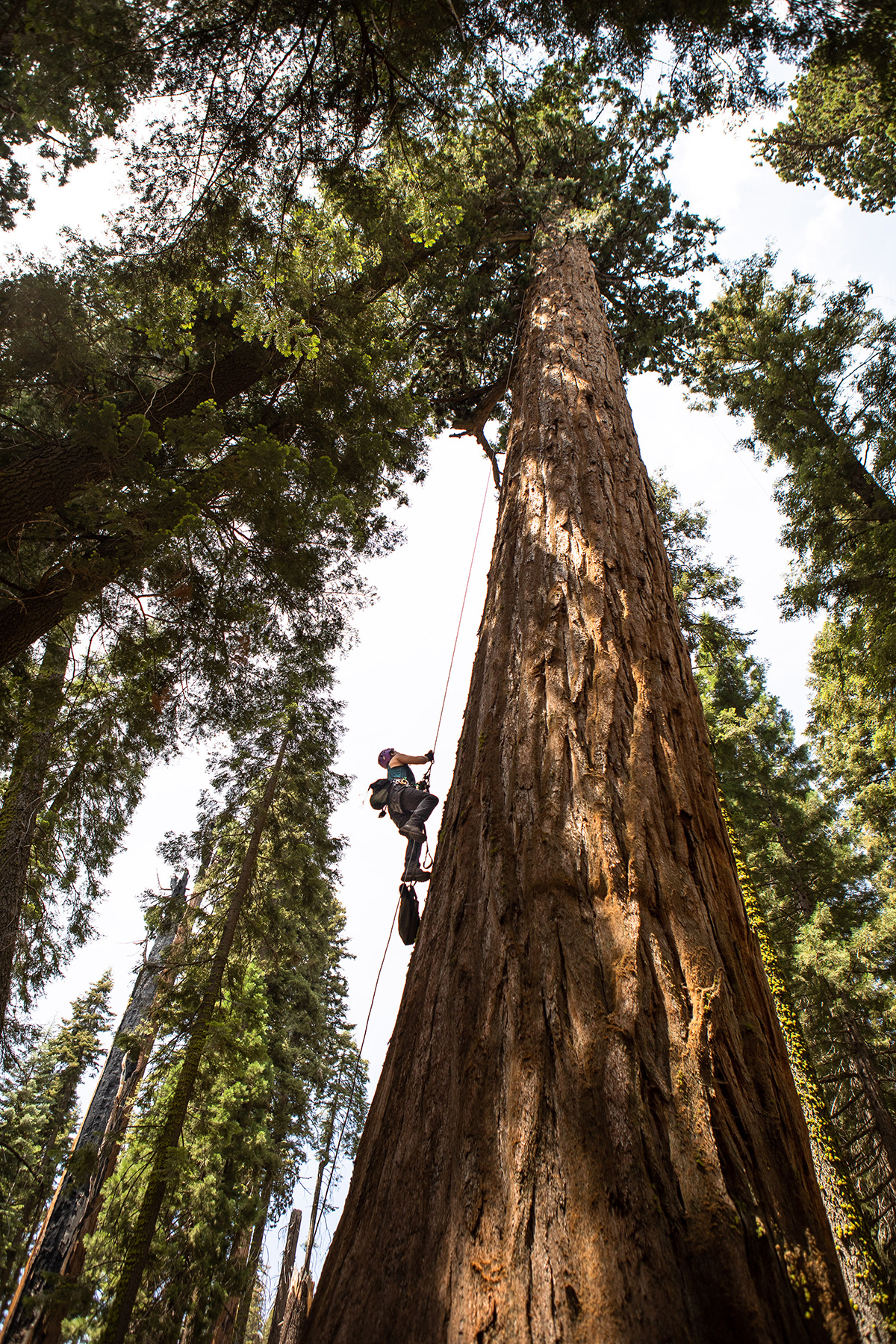
Learning from surviving trees Forest canopy ecologist Wendy Baxter collects samples of xylem (the tissue that transports water) from a giant sequoia in August 2021, in the hope of finding out why some trees seem more resilient to beetles and fire during drought. Baxter and colleague Anthony Ambrose are also helping the National Park Service build an archive of sequoia cones to preserve genetic diversity in case more trees are lost.
When they came down, their hands were black with pitch.
Over the next few years, the researchers watched as, one by one, those infested trees died.
In 2020, before new fire-management proposals could be approved and funded, a lightning strike started the Castle Fire. Nate Stephenson, an ecologist who had been working in the park since the late 1970s, watched the smoke from his home in Three Rivers.
He could tell what was going up in flames by the shape of the ash—carbonized oak leaves, pine needles, incense cedar, fir. When he saw sequoia ash, he knew that Freeman Creek, a large unlogged grove 30 miles away, was in trouble.
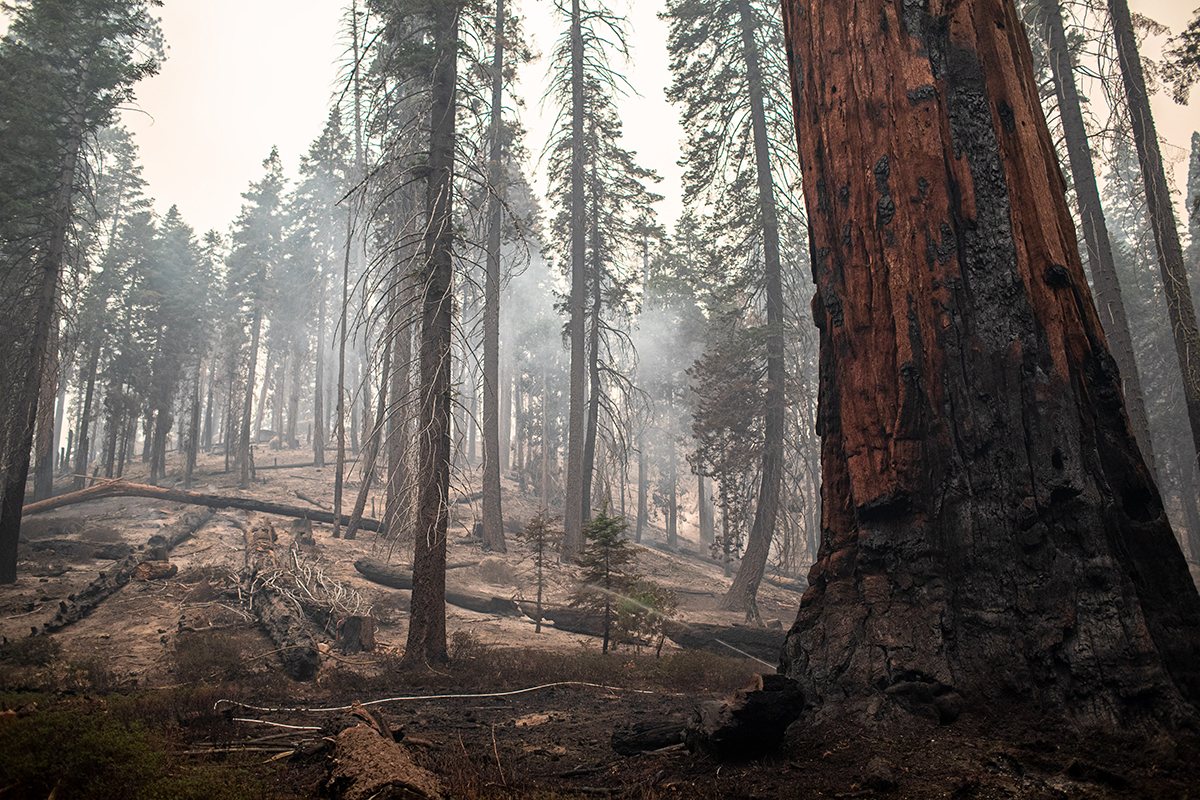
A photo of the aftermath looked like a moonscape. “That’s when I cried,” Stephenson says. “And I’m not prone to crying. They’re irreplaceable on any scale meaningful to us humans.”
Windy Fire in 2021 The air is thick with ash and smoke on the Trail of 100 Giants, as firefighters set up irrigation systems to cool down the base of a giant sequoia, which was damaged by a firestorm that passed through a day earlier.
Between 7,000 and 10,600 trees died that year—about 10 percent of the giant sequoias in the Sierra.
In spring 2021, photographer Mette Lampcov began a yearlong project to chronicle the sequoias and the researchers and park staff dedicated to protecting them.
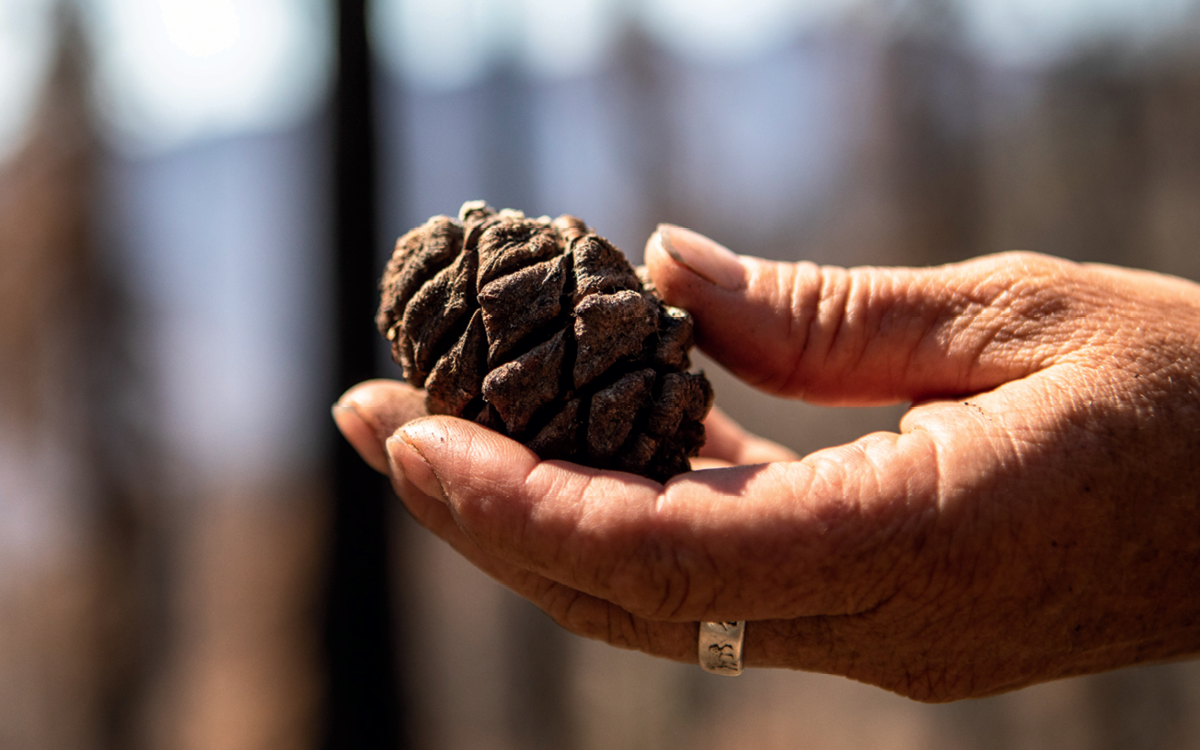
Gretchen Fitzgerald, an ecosystem staff officer at Sequoia National Forest, holds up a sequoia cone that had opened during the Castle Fire and shed its seeds. The ground around it was covered with sequoia seeds, which look something like oatmeal flakes.
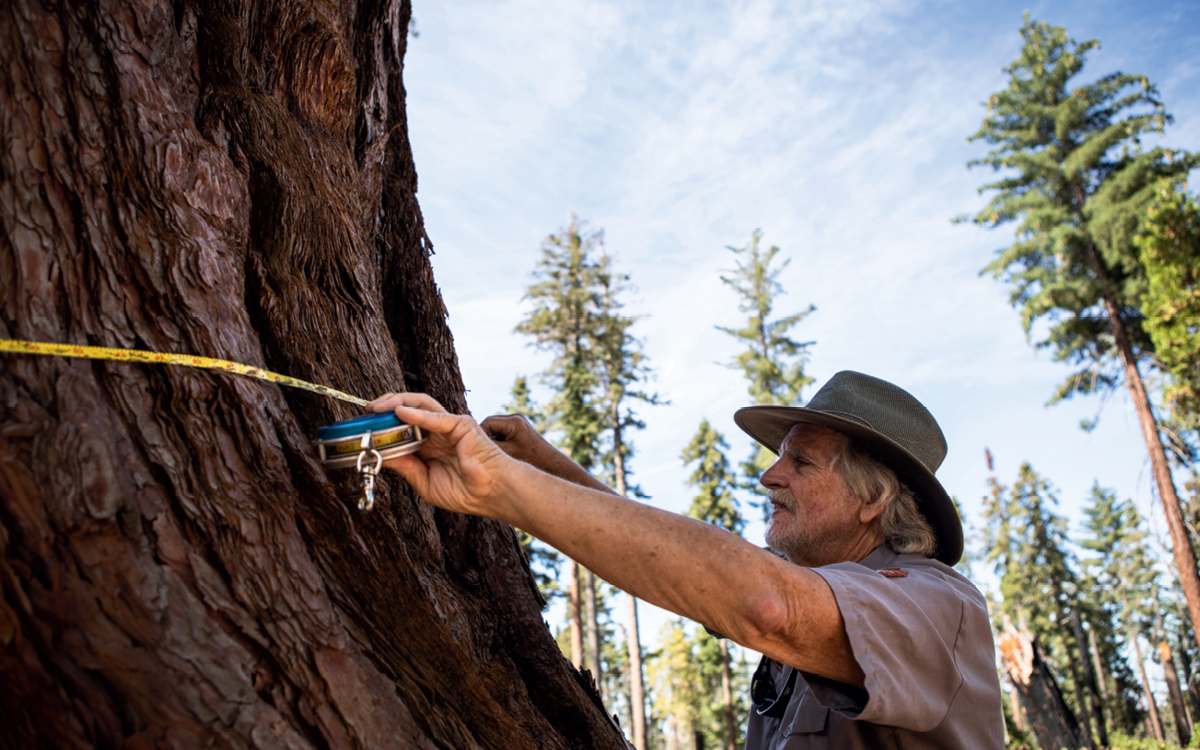
Fire ecologist Tony Caprio measures a giant sequoia as part of a pre- and post-fire assessment to see how the trees are affected by controlled burns. It’s his fourth visit to this tree since a controlled burn a decade ago.
Since Christy Brigham began working at the park, every year has brought a new crisis, and last year was no exception.
In September 2021, two wildfires merged into the KNP Complex Fire, which killed up to 2,380 sequoias before it was finally contained in December.
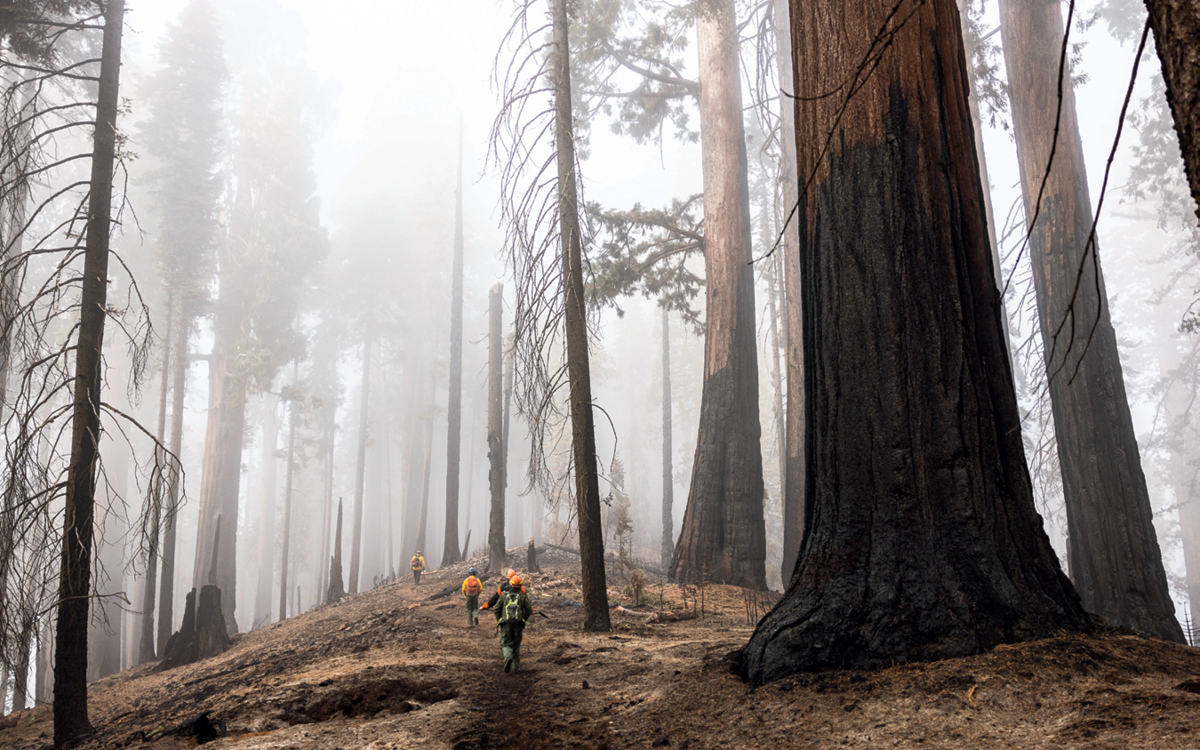
Brigham, Shive, and colleagues hike into a section of Redwood Canyon where satellite data showed some of the most severe damage following the KNP Complex Fire. “These trees escaped the worst of the damage, but in some places, flames reached as high as 150 feet, burning the tree canopy and every living needle on the trees in their path,” Brigham says. She estimates that the KNP killed between 1,330 and 2,380 giant sequoias in the parks. “These are trees that have lived for millennia, through so many fires. But because we mismanaged our forest by keeping all fire out—and screwed up the climate—we are losing them at alarming rates,” Shive says.
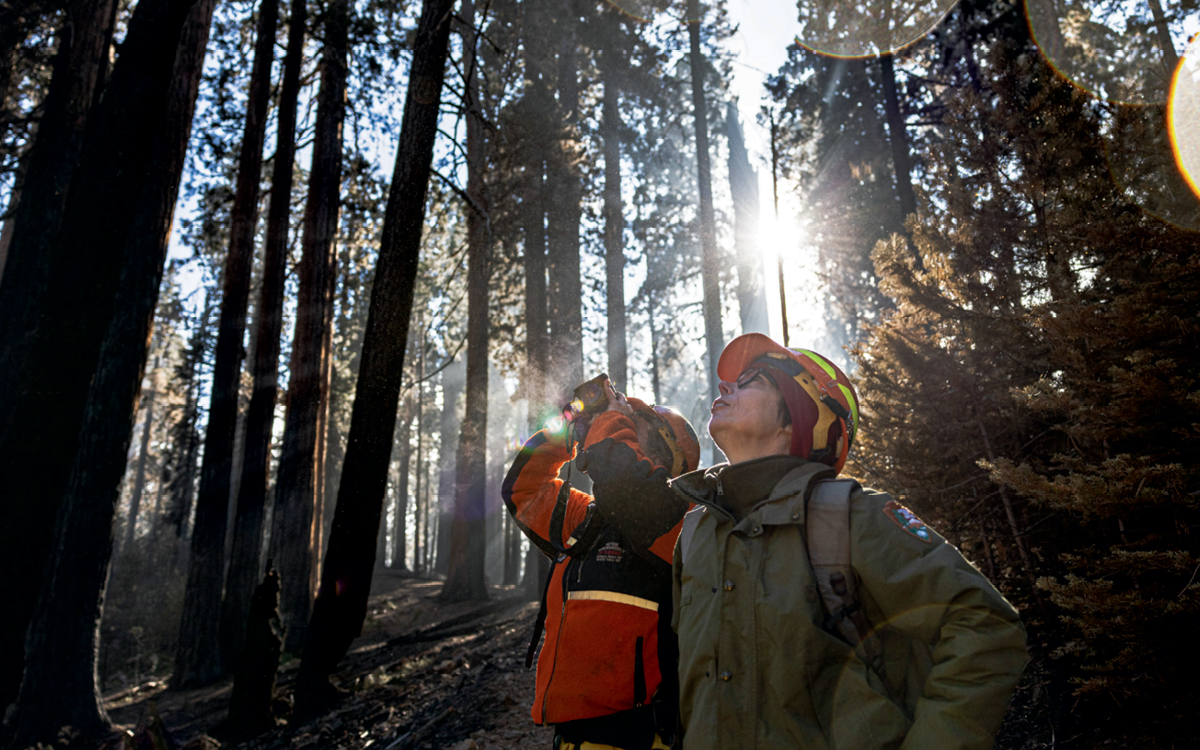
“The big trees were healthy” While Sequoia and Kings Canyon are still closed to visitors because of damage caused by the KNP Complex Fire, forest scientists Christy Brigham and Kristen Shive hike through Redwood Canyon, assessing the damage. “We saw some areas in the grove where fire did good work consuming fallen logs and needles and making space for the next generation of giants,” Brigham says. “The big trees were healthy, and you could see that a lot of the dense little trees and fuels had been burned up. That’s really inspiring.”
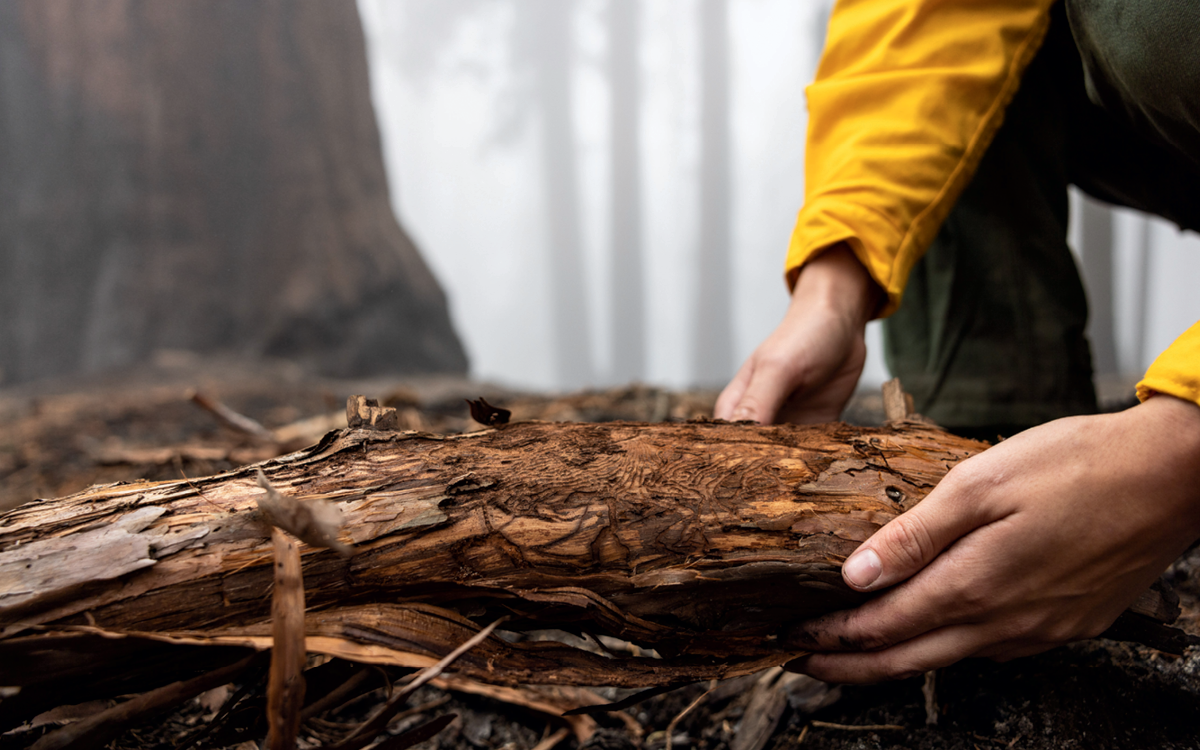
Beetle tracks are an ominous sign Ana Tobio, a parks intern, peels back the bark on a fallen sequoia branch to reveal tunnels cut through the cambium layer by western cedar bark beetle larvae. The beetle is native to the forest, but it hadn’t been known to kill giant sequoia trees until a historic drought hit California beginning in 2011. Although only 33 trees have been confirmed as killed by beetles, the infestation raises an alarming possibility: Climate change is making sequoias vulnerable in new and unpredictable ways.
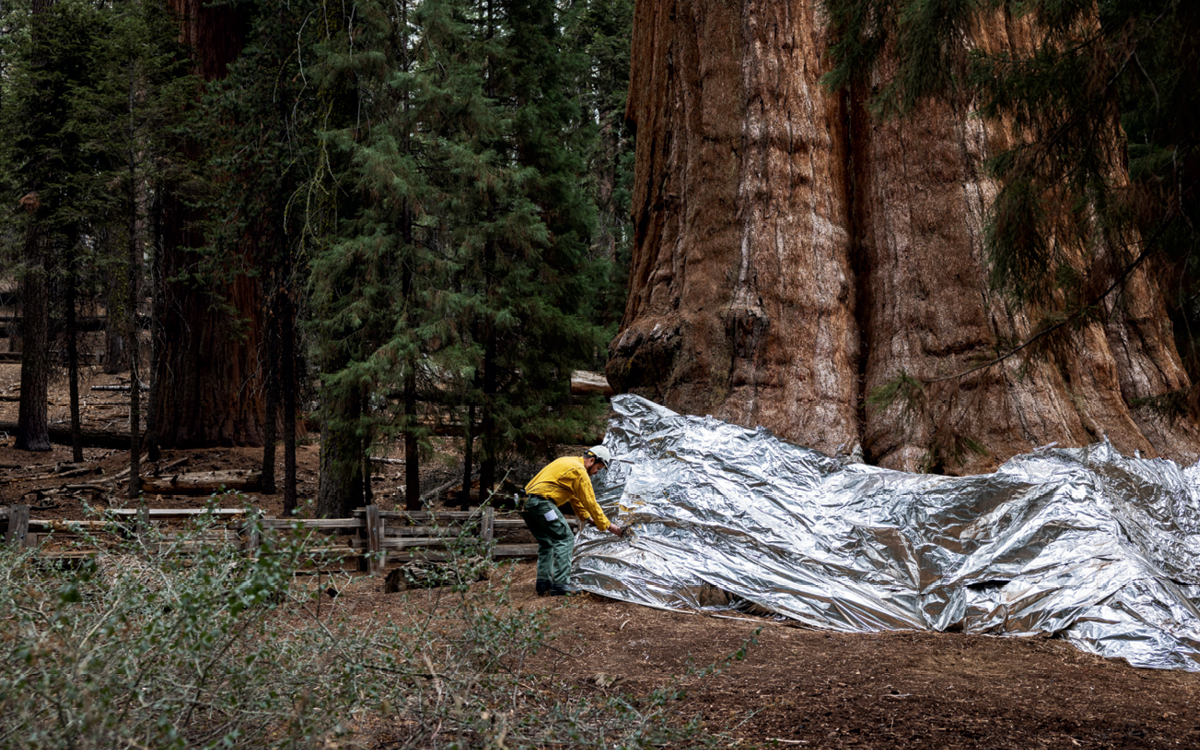
A protective layer helped As the KNP Complex Fire recedes, Andrew Cremers, a fuels specialist for Sequoia and Kings Canyon National Parks, removes foil that was put around the base of the General Sherman Tree to protect its trunk from floating embers—particularly sparks that could get inside the cavities left by previous burns, where a lack of bark makes the tree vulnerable to flames. The fires that made up the KNP Complex got within 500 feet of General Sherman but failed to do any damage because of the long and frequent history of controlled burns in Giant Forest. General Sherman is the world’s largest tree, at 275 feet tall and about 36 feet in diameter.
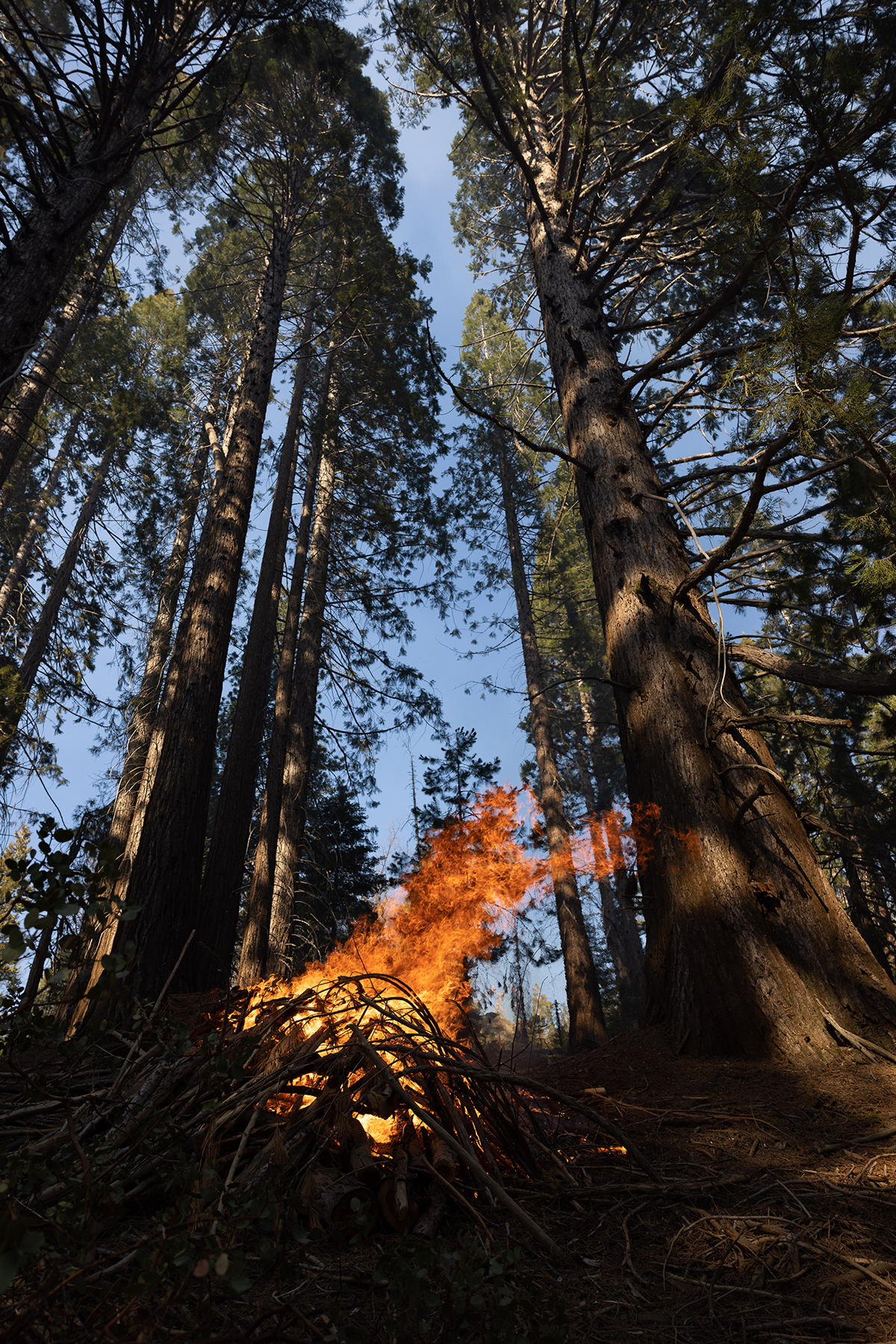
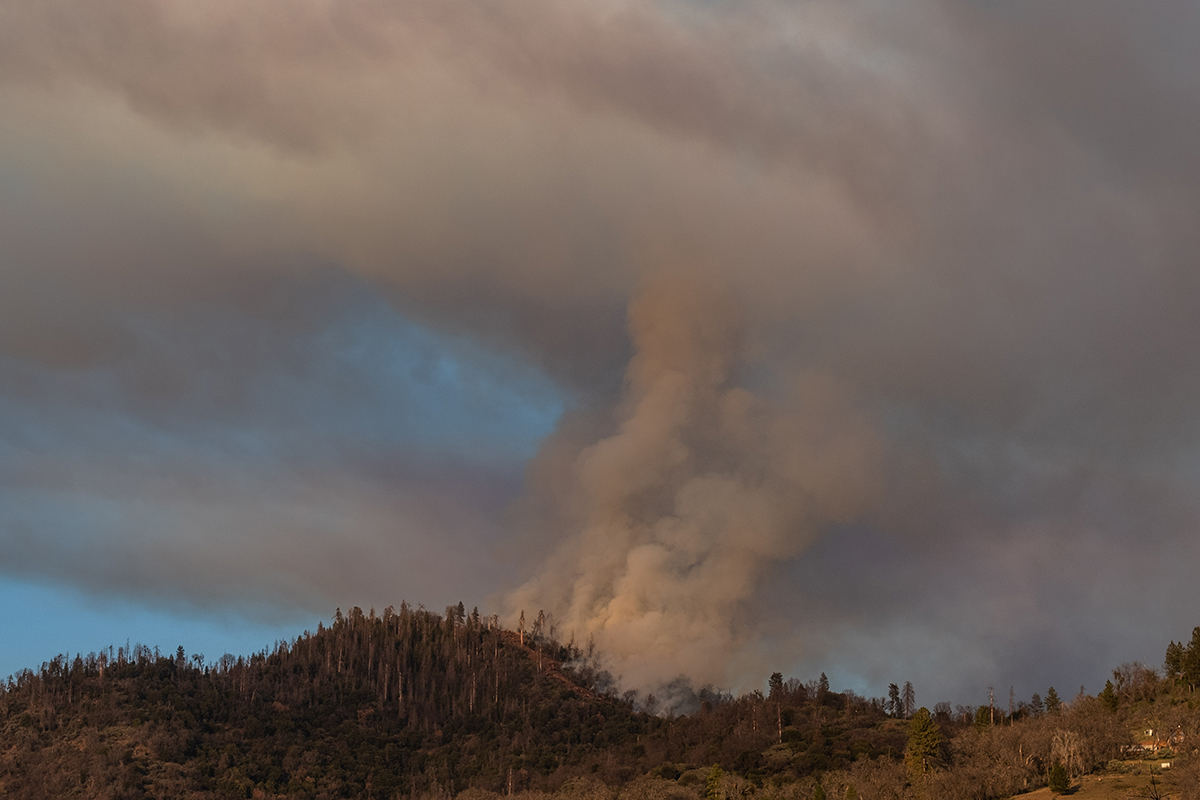
Controlled burns Left, workers in Big Stump Grove rake fallen tree branches and other debris and set pile fires. The process is more labor-intensive than a broadcast burn, where a fire is deliberately set and moves through the forest the way that a wildfire would, but safer in areas with buildings, or where large quantities of undergrowth could make a fire burn dangerously hot. At right, a prescribed fire burns in Sequoia National Forest.
A grove of giant sequoias is spectacular and like nothing else, but many of the superlatives ascribed to the trees aren’t quite accurate. They aren’t the tallest trees on the planet—those are the coast redwoods. They aren’t the oldest—those are the bristlecone pines. They are unlikely to join the many species expected to go extinct by the end of the century, both because they’re so resilient and because ardent Sequoiadendron giganteum fans have planted groves of them all over the world.
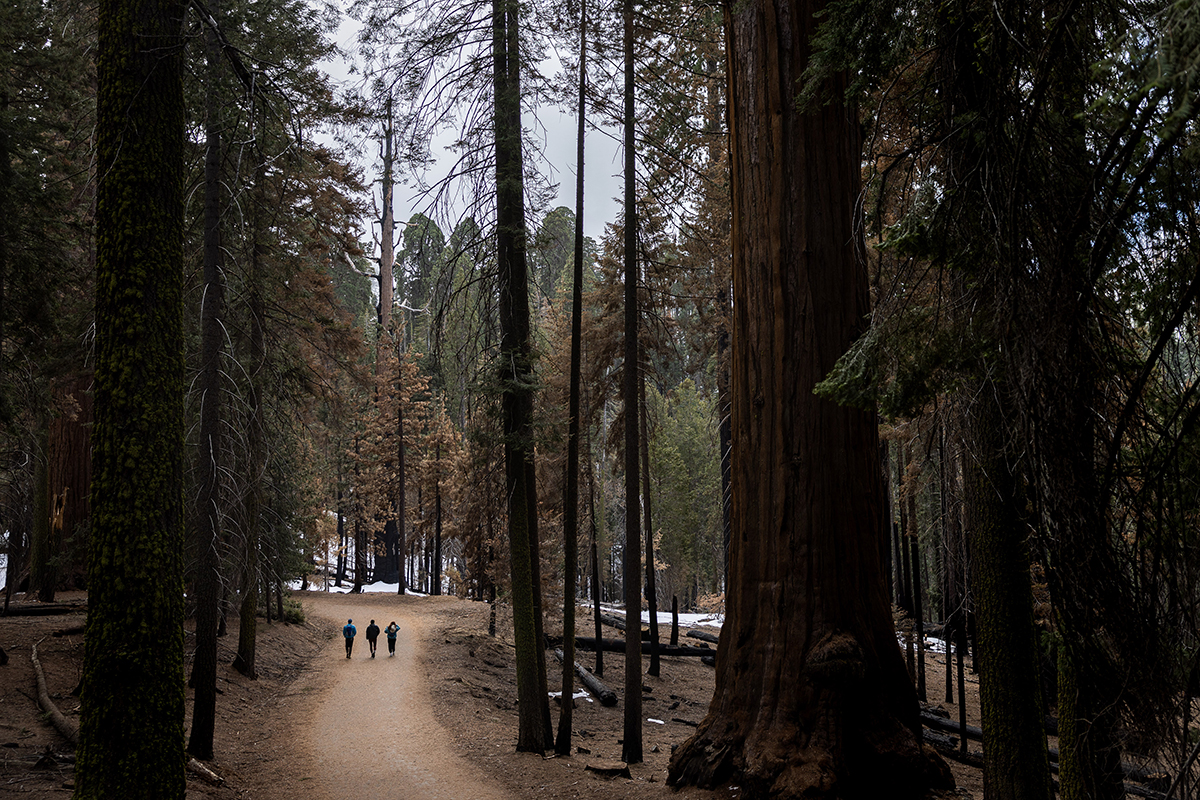
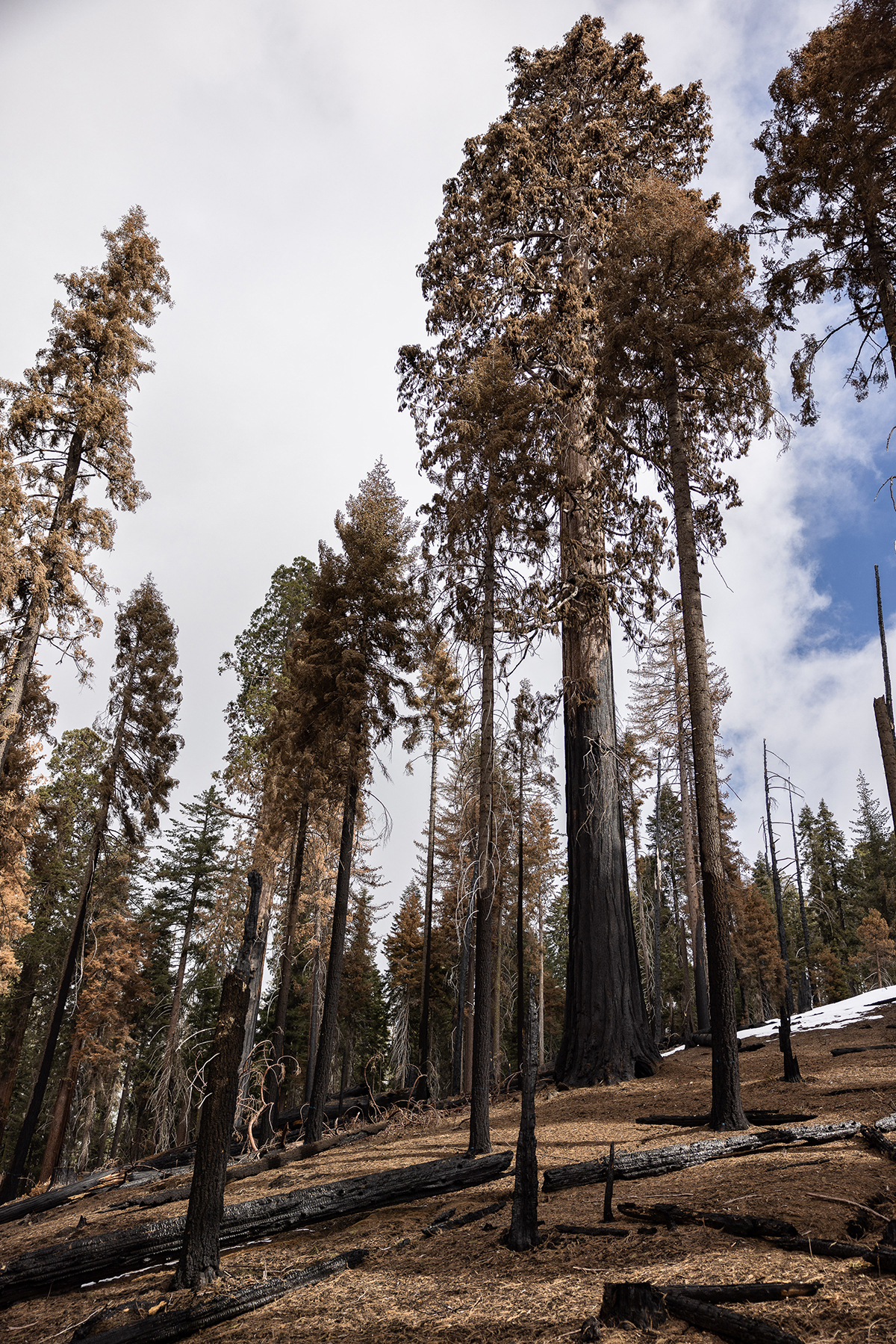
Left, Hikers walk in the Giant Forest. Directly in front of them stands the dead and burned remains of Lazarus, one of the first sequoias where scientists and tree climbers Wendy Baxter and Anthony Ambrose found evidence of bark beetles in a living tree. The discovery was a turning point in understanding of the of the sequoia’s resilience, and the consequences of rising temperatures and drought spurred by a changing climate. Right, a giant sequoia that has been fatally scorched during the KNP Complex fire. In the last two large wildfires to hit Sequoia and Kings Canyon National Park, from 2020 to 2021, an estimated 10% of the entire sequoia population was lost.
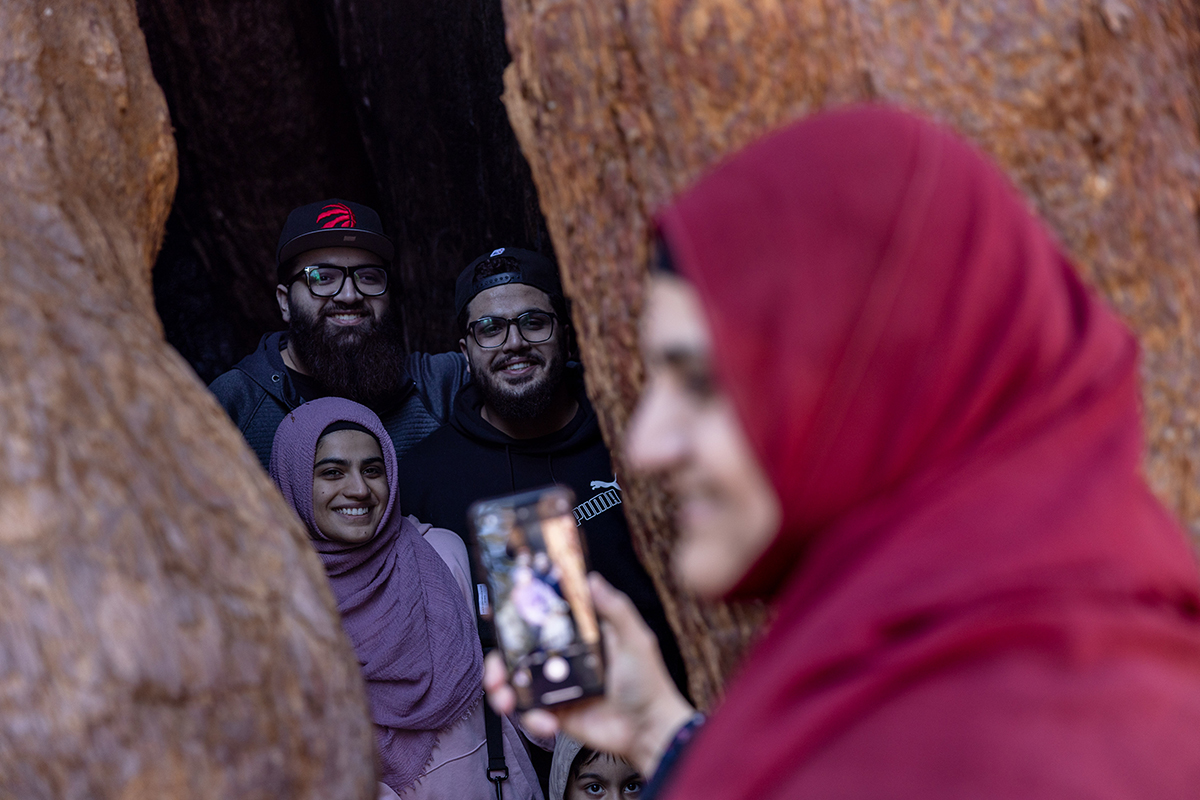
The Arian family, visiting from Los Angeles with relatives from Canada, take a photo inside a fire cavity at the base of a giant sequoia.
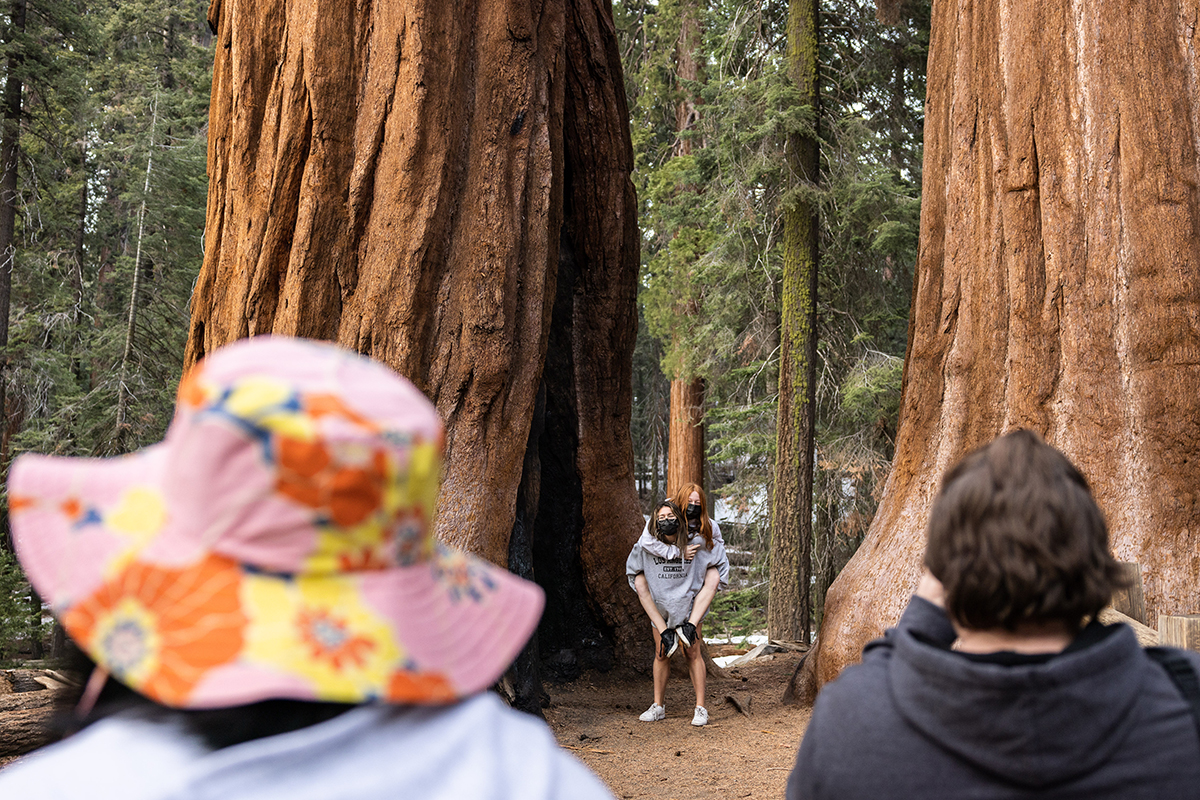
Students from a Michigan-based foreign exchange program flew to California to see the sequoias. They arrived in sun hats and shorts, only to realize that the trees are at an elevation of 8,000 feet, where there is snow on the ground for much of the year.
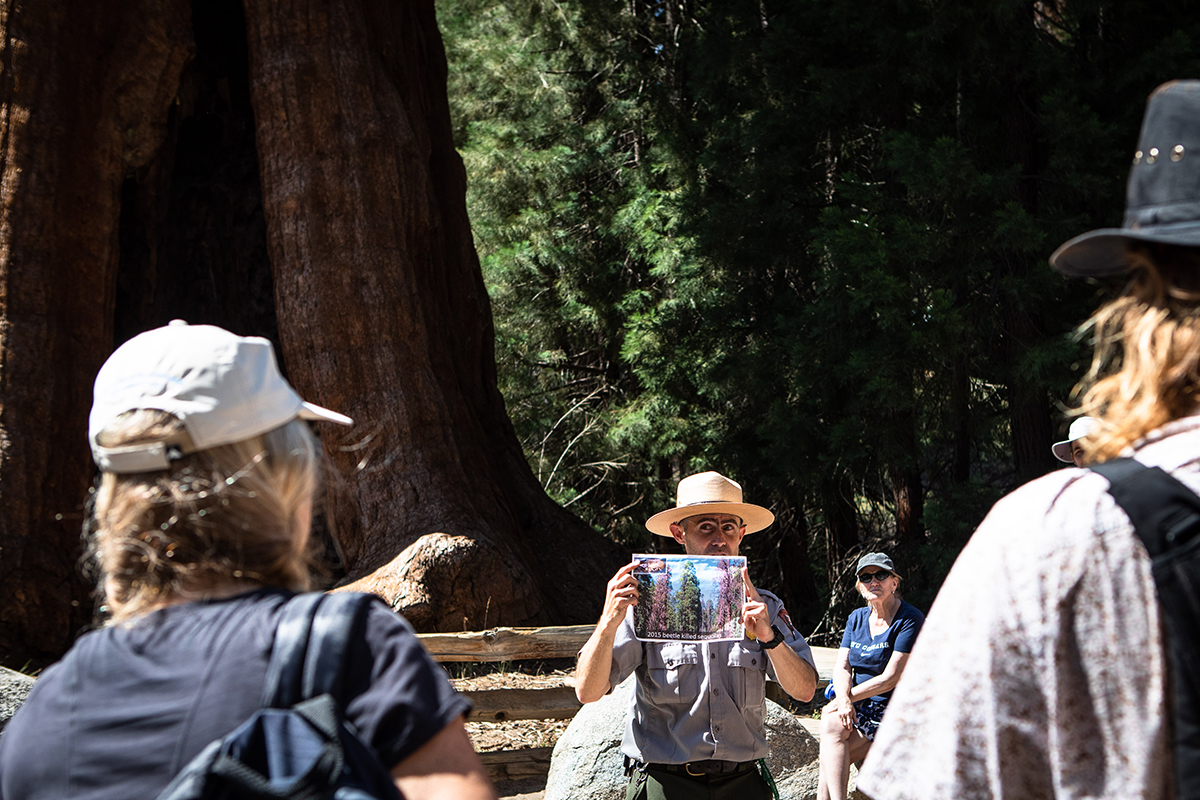
Jeffrey Zylland, a ranger working for Sequoia and Kings Canyon National Park, gives a talk to visitors at the base of the General Sherman Tree.
Here’s what they are: trees that less than 200 years ago seemed destined to be logged into fenceposts but instead became the first living organisms to inspire the creation of a national park. They’re a symbol of a particularly relevant form of hope—a sign of how cultures can unexpectedly change course and, in the process, preserve something wilder and more enduring than themselves.
Timeline: Eternal giants
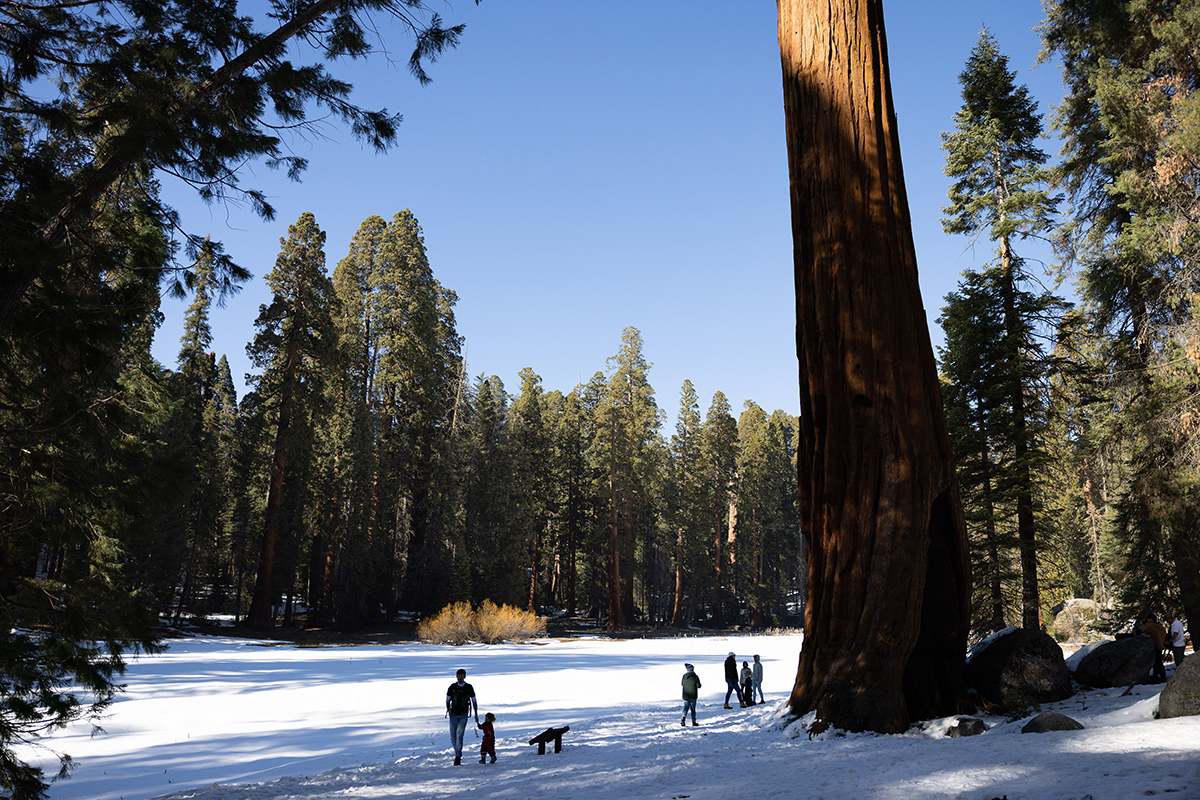
Park visitors on Big Trees Trail, which circles Round Meadow. The meadow is a popular vantage point to see sequoias from a distance and get a feel for their enormous size.
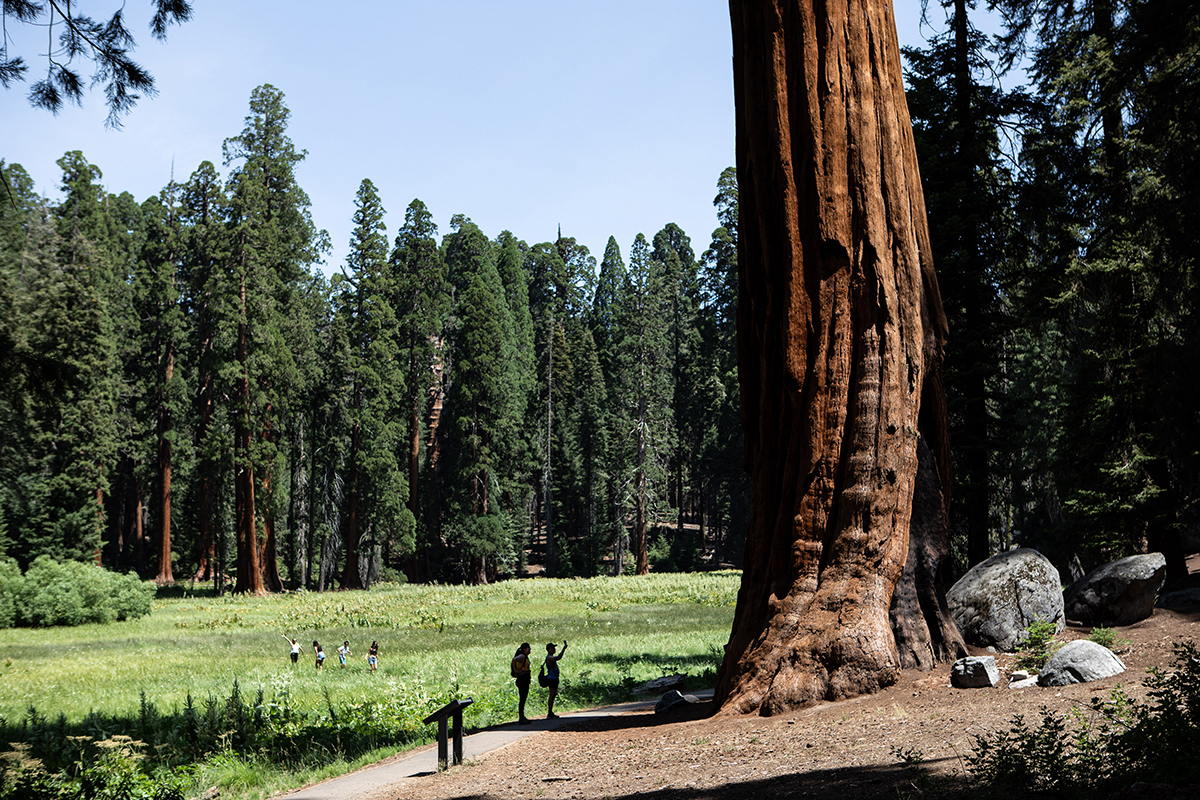
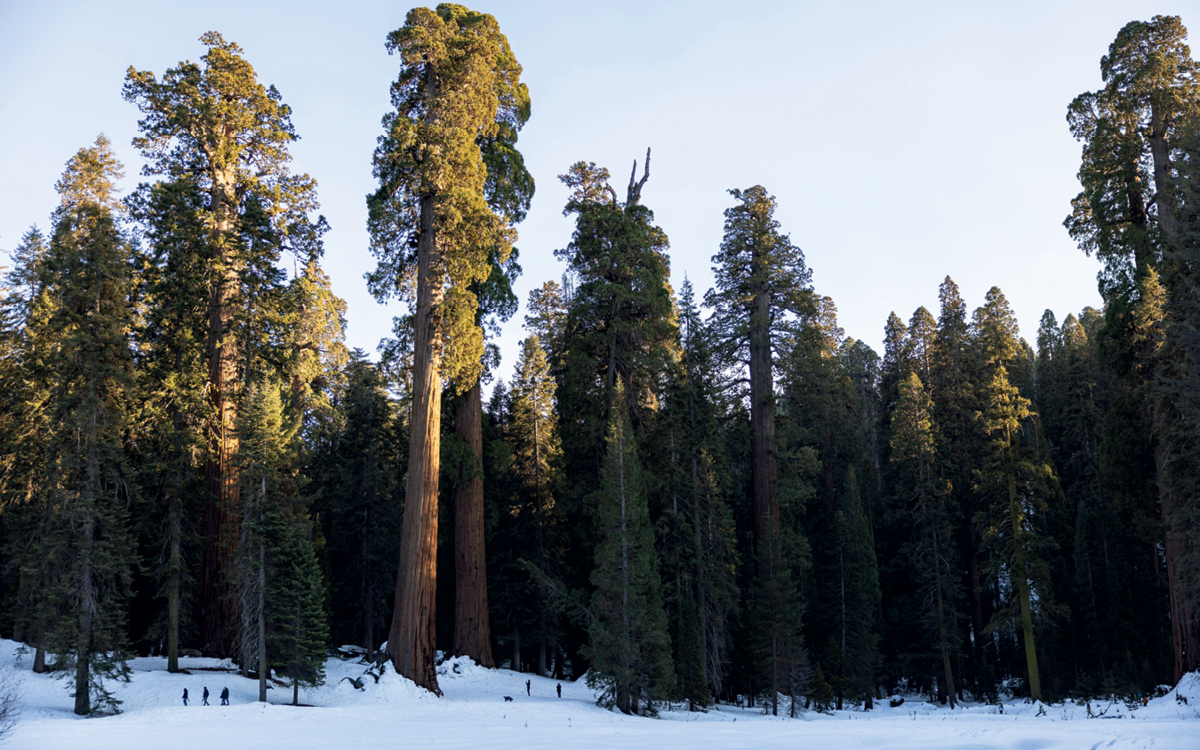
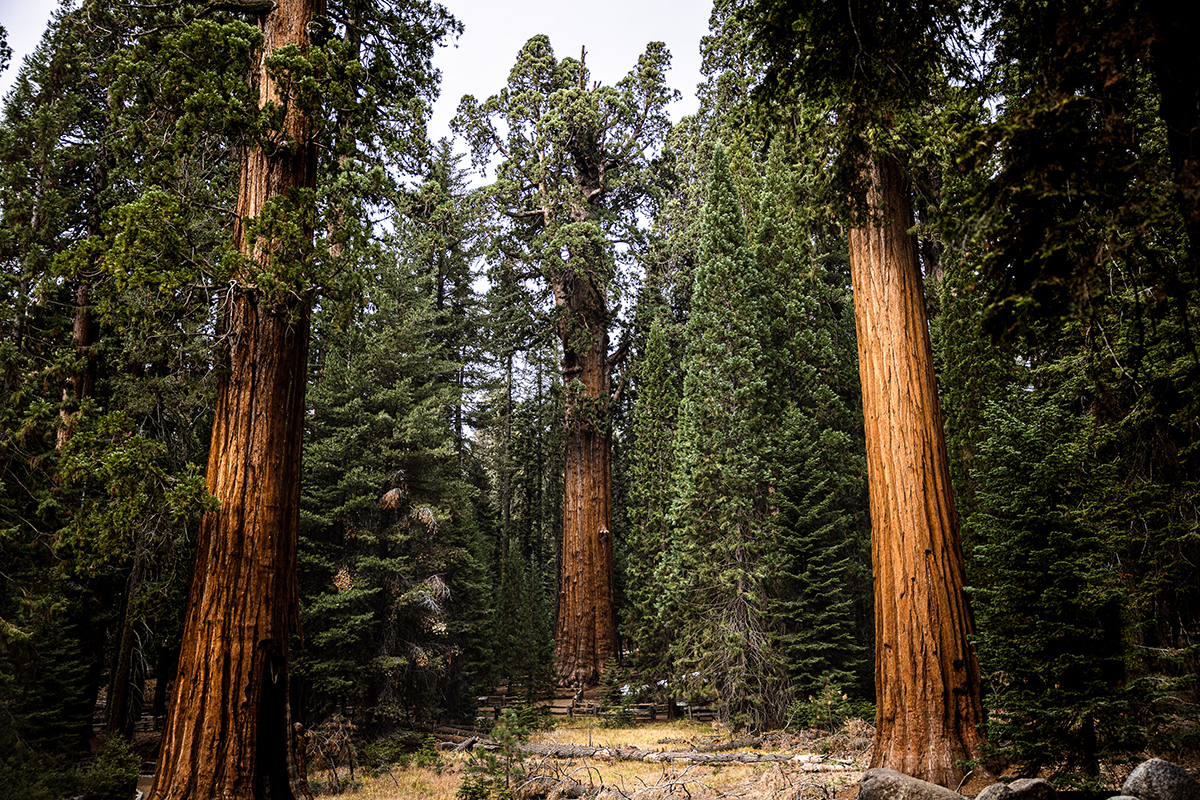
The General Sherman tree—quite possibly the most visited tree in Sequoia and Kings Canyon National Park—flanked by two other sequoias. General Sherman is the world's largest tree, measured by volume. It stands 275 feet (83 m) tall and is over 36 feet (11 m) in diameter at the base.
Heather Smith is Sierra’s science editor.
Mette Lampcov is a Los Angeles–based documentary photographer. Her work focuses on how climate change is affecting people and the environment around them in California.
Multimedia design by Geoff McGhee.
 The Magazine of The Sierra Club
The Magazine of The Sierra Club



